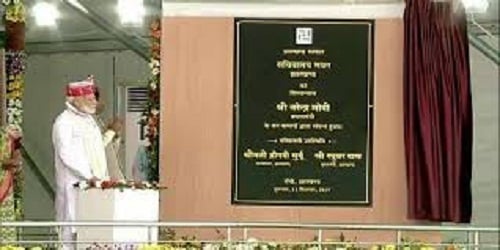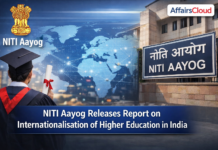On September 12, 2019 the Prime Minister(PM) of India Shri Narendra Modi paid a one-day visit to Jharkhand and launched schemes namely KMY, PMLVMY and Swarojgar. He also inaugurated Jharkhand assembly and schools in the state.
Scheme Launched in Ranchi, Jharkhand
KMDY:
The “Kisan Maan-Dhan Yojana”(KMY) for small and marginal farmers was launched in Ranchi, the capital city of Jharkhand. This scheme would benefit 5crore farmers nationwide.
i. Outlay: The scheme is outlayed at a cost of Rs 10,774 Crores for the next three years.
ii. Contribution: Farmers can contribute to KMDY in terms of installments from PM-KISAN scheme and through Common Service Centres(CSC).
About KMY:
- It is a monthly pension scheme launched in 9thAugust, 2019 for small and marginal farmers between 18-40years and provides Rs 3000 after the age of 60.
- The monthly contribution ranges from Rs55-Rs200 depending on the age of entry in this scheme.
- Life Insurance Corporation of India(LIC) is the pension fund manager of this scheme.
- The supervisor of this scheme is Ministry of Agriculture & Farmers Welfare(MAFW).
PMLVMY:
Pradhan Mantri Laghu Vyapari Mandhan Yojana (PMLVMY) was launched with the aim of providing pension to small shopkeepers and traders benefiting 3crore people in the country. Government has earmarked Rs 750 crore for the scheme in the Union Budget 2019-20. The Life Insurance Corporation of India has been chosen as a pension fund manager responsible for managing the pension fund, central recordkeeping agency and responsible for pension payout.
About PMLVMY:
- It provides a pension of Rs 3000 per month after 60years of age.
- This scheme was announced on 5 July 2019 during the budget presentation.
- Eligibility: Shopkeepers, traders and also self-employed people aged between 18-40years with less than 1.5 crore turnover.
Multi Modal Terminal at Sahibganj, Jharkhand
PM dedicated the nation’s second Multi-Modal Terminal(MMT) at the Sahibganj town of Jharkhand built across river Ganga under Jal Marg Vikas Project (JMVP). The phase1 building cost of the terminal was 290 crores.
Terminal features:
- Built by: Inland Waterways Authority of India(IWAI).
- Phase 1 cost: 290 crores.
- Project launch: 10 November, 2016
- Project completion: September, 2019
- Phase 2: Phase 2 of the terminal is expected to cost around ₹376 crores.
Terminal benefits: This terminal will boost the cargo connectivity between India and Nepal and also enhance domestic coal transportation from the local mines in Rajmahal area of Jharkhand to various thermal power plants. The other transportation products include coal, stone chips, fertilisers, cement and sugar.
Route connectivity: The road rail river transport will connect remote areas to Kolkata, Haldia and other places near the bay of bengal. River-sea connectivity will also enhance route between North eastern states and Bangladesh.
Phase 2: The terminal capacity under phase 1 which is currently 30 lakh tonnes per annum will increase to 54.8 lakh tonnes per annum in its second phase under the Public-private partnership (PPP) mode.
Freight village: A freight village which is a specialised industrial estate attracting companies that requires logistics services is to be set up on 335 acres of proposed land.
First MMT: The first MMT was inaugurated by Modi in Varanasi, UP in November 2018.
Building inaugurations
i. Jharkhand assembly: New Jharkhand Vidhan Sabha (state assembly building) was inaugurated by PM in presence of Jharkhand Chief Minister(CM) Raghubardas and governor Droupadi Murmu and had also laid foundation stone for the New Secretariat Building at Ranchi.
ii. Assembly Feature:
- Area: The three storey building was built on an area of 39 acres of land.
- Cost: The cost of construction was Rs 465 crore.
- Foundation stone: Jharkand’s Chief Minister(CM) Raghubardas laid the foundation stone June 12, 2015.
- This assembly becomes the first paperless assembly of the country.
iii. Residential Schools: 462 Eklavya Model Residential Schools were inaugurated to provide education from basic till higher secondary education to Scheduled Tribe(ST) students in tribal dominated areas.




